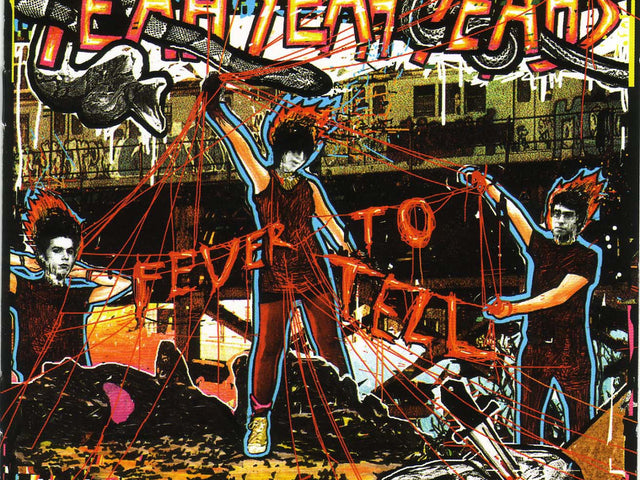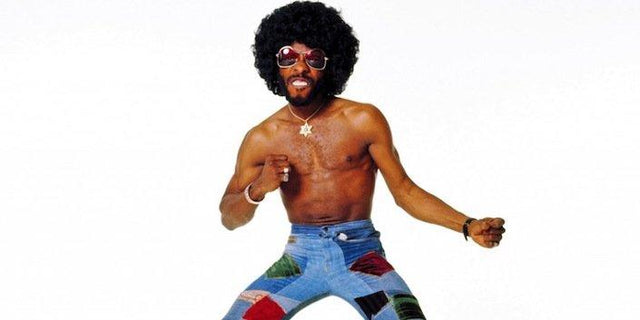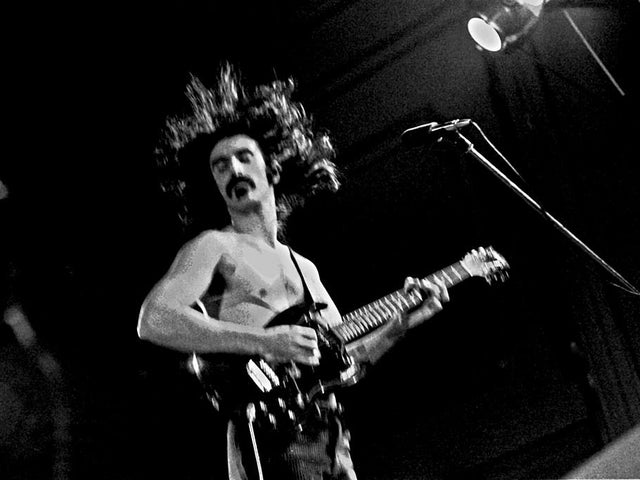More than 20 years after the end of World War II, German culture hadn’t fully recovered from the Nazi era. The first wave of rock and roll had come and gone, with nothing to show for it. But the hippie movement of the late ‘60s -- psychedelic music coupled with political consciousness -- sparked a new creativity in the German youth.
Bands like Amon Düül II, formed at a political commune, and Can, inspired by Andy Warhol’s Factory scene, began using their free jazz and avant-garde classical backgrounds to play a new type of psychedelic rock. It has lots of names -- Deutsch-Rock (“German rock”), kosmische musik (“cosmic music”), but the one that stuck was coined somewhat sarcastically by the British music press: krautrock.
There’s no magic recipe for krautrock. If there was, it’d be a shitty recipe, because everything came out so differently. But there is one common thread running through all of it: There’s a freedom in all of these albums, an interstellar exploration through music -- whether it’s with guitars, drones, or synths -- that’s futuristic but completely human (thus, no Kraftwerk on this list, despite their image being the one most associated with krautrock). No matter what the ingredients, these 10 bands always reach that same feeling, even in different forms.

Can: Tago Mago
Can is probably the most recognizable name on this list, and for good reason. Their influence is all over the music that sprouted in their wake (the Fall, Sonic Youth and Radiohead to name a few). The funky rhythmic jams of sides 1 and 2, powered by Jaki Liebezeit’s powerhouse drumming, give way to avant-garde freakouts on sides 3 and 4.
Tago Mago is all about control. The loose improvised jamming was meticulously pieced together in the editing room (“Halleluhwah” somehow feels concise at over 18 minutes), and the loss of control of the second disc coalesces into prayer-like beauty.

Neu!: Neu!
Drummer Klaus Dinger and guitarist Michael Rother briefly played together in an early incarnation of Kraftwerk, before leaving to form Neu! (The drummer-less void led Ralf Hütter and Florian Schneider to start making Kraftwerk music with electronics and a drum machine). “Hallogallo,” the first song of Neu!’s self-titled debut, hits you right away with what became Dinger’s trademark motorik drumbeat: the pulsing kick and snare that mimics the sounds of the highway. Much of the record is powered by the rhythms, and Rother’s atmospheric guitars steer Dinger’s engine to cosmic heights. Wilco basically lifted “Hallogallo” wholesale for their song “Spiders (Kidsmoke),” and the chugging bass engulfed by swirling feedback of “Negativland” definitely gave Sonic Youth a few ideas.

Guru Guru: UFO
If you want some indication of Guru Guru’s sound, look no further than track five of UFO: “Der LSD-Marsch” (“The LSD March”). Their 1970 debut record is essential acid rock -- loud, abrasive and oozing with groove. Guru Guru managed to lock onto a ferocity that was only really matched by Jimi Hendrix, but with a more experimental edge that only could have come out of the ‘70s German rock scene. It’s hard to imagine so much sound coming from only three musicians -- drummer Mani Neumeier wailing over his crashing cymbals and Uli Trepte’s bass bubbling just below the surface of Ax Genrich’s guitar solos.
Fortunately, Guru Guru wasn’t as short-lived as most of the bands on this list. Neumeier is still going strong with the band, including collaborative work with Japanese psych rockers Acid Mothers Temple, which they’ve christened Acid Mothers Guru Guru.

Cluster: Zuckerzeit
Not all krautrock bands created acid-soaked guitar rock. Cluster made some genre-defining albums without really being “rock” at all. The duo of Dieter Moebius and Hans-Joachim Roedelius created a proto-industrial, dark electronic sound on their first two records. So when they brightened it up on their third, they went all the way and playfully titled it Zuckerzeit, or “Sugar time.” Songs like “Caramel” laid a foundation for electropop. Even with drum machines and synths, Cluster pushed past the rigidity that defined their more successful peers in Kraftwerk, making spacier, improvisational electronic music.

Faust: IV
Faust put out four records between 1971 and 1973 (plus a collaboration with avant-garde composer Tony Conrad). All of them are essential, but IV may be the best starting point. Songs like “The Sad Skinhead” and “Jennifer” are more melodic than anything they had done up to that point. Though it’s their most accessible, IV is still Faust. Opener “Krautrock” is a nearly 12-minute drone and feedback rocker, and “Just a Second” features wild electronic noise. Apparently, Faust had no intention of becoming a conventional rock band either. Virgin rejected their fifth album, and the band broke up shortly after.

Amon Düül II: Yeti
The West German political art commune Amon Düül actually spawned two bands of the same name. Although the II in their name might make you think they’re merely a sequel, Amon Düül II eclipses their former communal partners. Their debut Phallus Dei is one of the first krautrock records, along with Can’s Monster Movie. But their follow up, 1970’s Yeti, has a slight edge. The massive double album is split between compositions (disc 1) and improvisations (disc 2), but both sets feature some of the best progressive psychedelic rock ever recorded. Even as they became a somewhat successful band, Amon Düül II held fast to their origins, with all the band members living together.

Harmonia: Musik von Harmonia
In 1971, Cluster’s Dieter Moebius and Hans-Joachim Roedelius moved to the countryside of Forst, Germany. When Neu!’s Michael Rother visited to jam, something clicked. “This sounds romantic -- it was like love at first sight,” he said in a press release for the Harmonia vinyl reissues. “I left Dusseldorf and Neu! behind and moved to Forst.”
Cluster’s pastoral relocation and their work with Rother sparked a change in their own music, moving away from the noise of their earlier work for Zuckerzeit. And Harmonia also changed Rother. In an interview with The New Yorker in 2016, he said he had “left behind the idea of being a guitar hero,” opting to focus on “one note, one guitar string” instead. You can hear his guitar’s steady roar beneath the jumping synths of “Watussi” and its slow rumble in the ambient “Sehr Kosmisch.”
After hearing Musik von Harmonia, Brian Eno called Harmonia “the world’s most important rock band.” (The trio eventually even recorded with Eno, later released as Tracks and Traces.)

Agitation Free: 2nd
If you made a list of the greatest jam bands of the ‘70s, you’d probably say Grateful Dead, the Allman Brothers Band and Agitation Free. Well, probably not the last one, but if you’ve heard Agitation Free’s forgotten classic 2nd, you might. The bluesy guitar interplay that defined these American bands is definitely there, but there’s something wholly unique about Agitation Free. Lutz Ulbrich and Stefan Diez’s soaring guitars convey a sense of pure freedom. The dueling guitars of “Laila” swirl around play off each other before coming together on the melody, an octave apart, like some cosmic “In Memory of Elizabeth Reed.” The guitars definitely steal the show, but the bass is always right there. Michael Gunther deftly dances with the riffs as easily as Phil Lesh does with the Dead.

La Düsseldorf: Viva
Once Neu! split, Klaus Dinger formed La Düsseldorf -- not nearly as well known as his earlier bands, but every bit as influential. David Bowie went as far as to call them “the soundtrack of the ‘80s.” Their self-titled record gave Bowie and Brian Eno a blueprint for their Berlin trilogy, but its follow up, 1978’s Viva, is where La Düsseldorf perfected their sound. Bowie was pretty spot on; Dinger and co. pushed Neu!’s sound firmly into the future. The beautiful atmospheric synths of songs like “Rheinita” and the 20-minute epic closer “Cha Cha 2000” don’t sound spacey or experimental, but a definite precursor for what would come in the next decade.

Tangerine Dream: Alpha Centauri
With over 100 albums to their name (seriously!), Tangerine Dream can be daunting for first timers. By their second LP, the band had abandoned the psychedelic avant-garde rock of most of their peers for deep, atmospheric synthesizers. But nothing lives up to the title “kosmische musik” like TD’s ‘70s records. Alpha Centauri is a transitional record, holding over the flute, organ and drums of their debut but layered within dark, spacey textures. Mid-’70s synth-and-sequencer records like Phaedra and Rubycon make for good entry points to Tangerine Dream, but Alpha Centauri manages to feel like a soundtrack for a black hole while maintaining the organic feel of their original krautrock.
Peter Cauvel is currently taking bets on what will bankrupt him first -- records or concert tickets.
Related Articles
Join the Club!
Join Now, Starting at $44Exclusive 15% Off for Teachers, Students, Military members, Healthcare professionals & First Responders - Get Verified!










